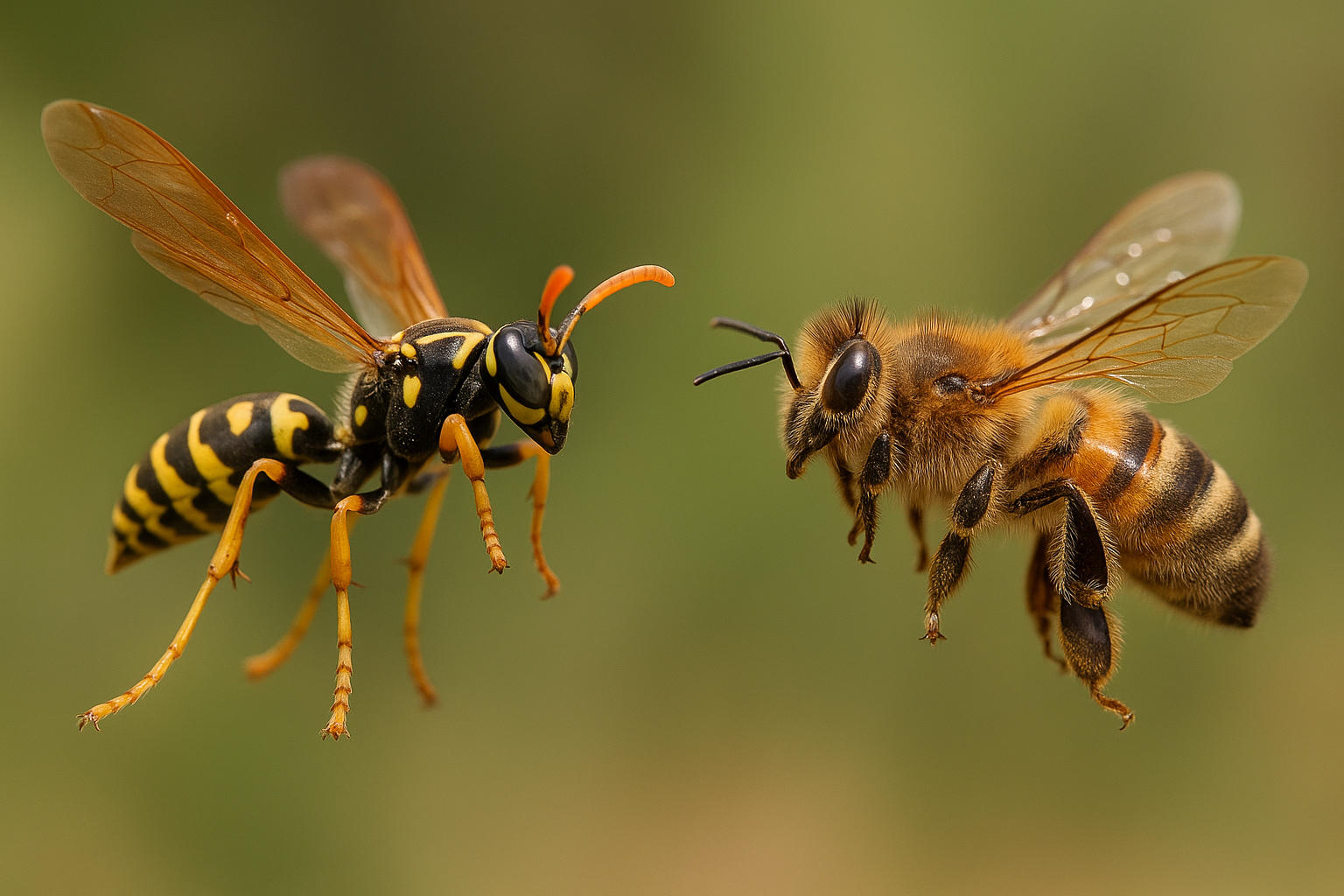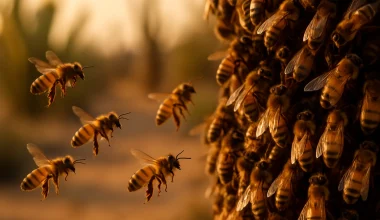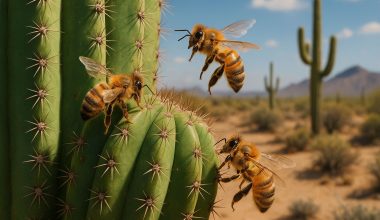Do you know the difference between a swarm of Africanized honey bees and a colony of paper wasps? If you live in the Valley, you’d better—because mistaking one for the other can mean the difference between peaceful coexistence and a trip to urgent care. Let Bee Removal Phoenix help you spot, avoid, and deal with both like a pro.
🐝 Africanized Honey Bees in Arizona
Africanized honey bees (AHB), often sensationalized as “killer bees,” are the dominant wild honey bee species in the Phoenix area. Brought into Brazil in the 1950s, they arrived in Arizona in the early 1990s—and now, virtually every wild honey bee colony you’ll see here is Africanized. (University of Arizona Extension)
- What makes them different?
Africanized bees look almost identical to European honey bees, but their temperament is far more defensive. If their nest is disturbed, they will attack in much larger numbers and pursue threats over greater distances. - Behavior:
AHBs are more likely to relocate, swarm, and occupy smaller, weirder places—like water meters, BBQ grills, playground equipment, mailboxes, tree hollows, cinder blocks, and more. (UCR Africanized Honey Bee FAQ) - Sting risk:
A single sting is no worse than a European honey bee, but their tendency to attack en masse is what makes them truly hazardous.
Fun Fact:
Most “killer bee” incidents in Arizona are not because the bees are hunting humans, but because people unwittingly disturb a nest while working in the yard, pruning trees, or moving outdoor equipment.
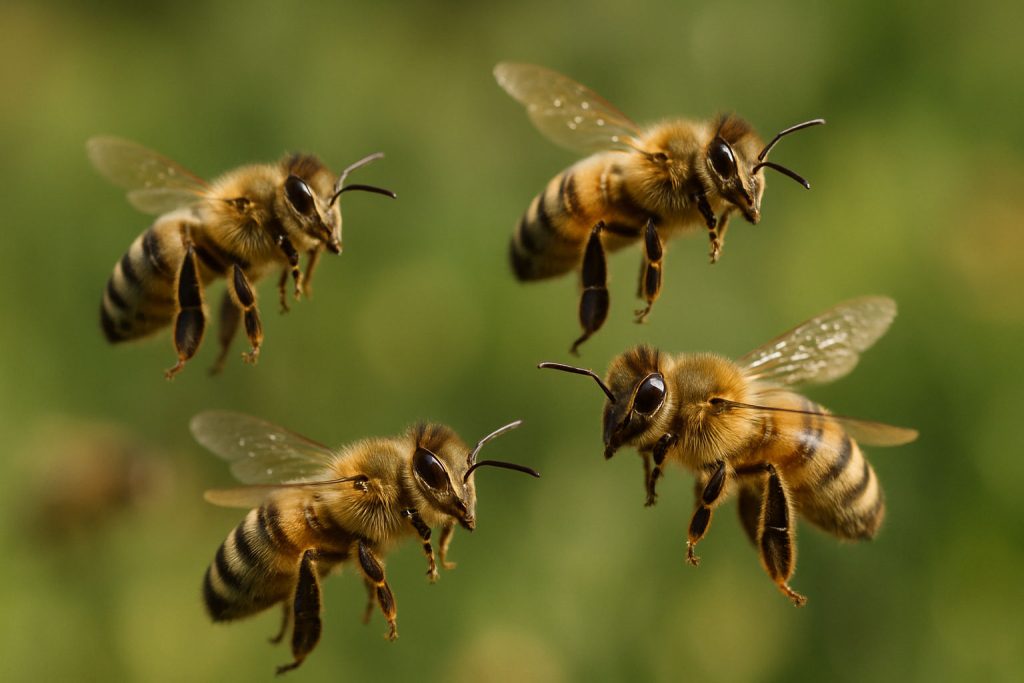
🪰 Paper Wasps: Arizona’s Stealthy Swarmers
Paper wasps are common in the Phoenix metro area, especially Polistes species like the Arizona paper wasp and yellow paper wasp. (Missouri Dept. of Conservation, WA Dept. of Health)
- Appearance:
Long-legged, slender, with a narrow “waist” and smooth (not fuzzy) bodies. Color varies: dark brown, reddish, or black with yellow markings. - Nest building:
Paper wasps build open, umbrella-shaped nests—papery, grayish, and typically attached under eaves, porch ceilings, or in sheltered corners. Each cell is open and visible. - Behavior:
Less aggressive than yellowjackets, but will defend their nest if you get too close. They can sting multiple times.
Did You Know?
Unlike bees, wasps are predators—they help control caterpillars and garden pests. Still, you don’t want them nesting above your front door.
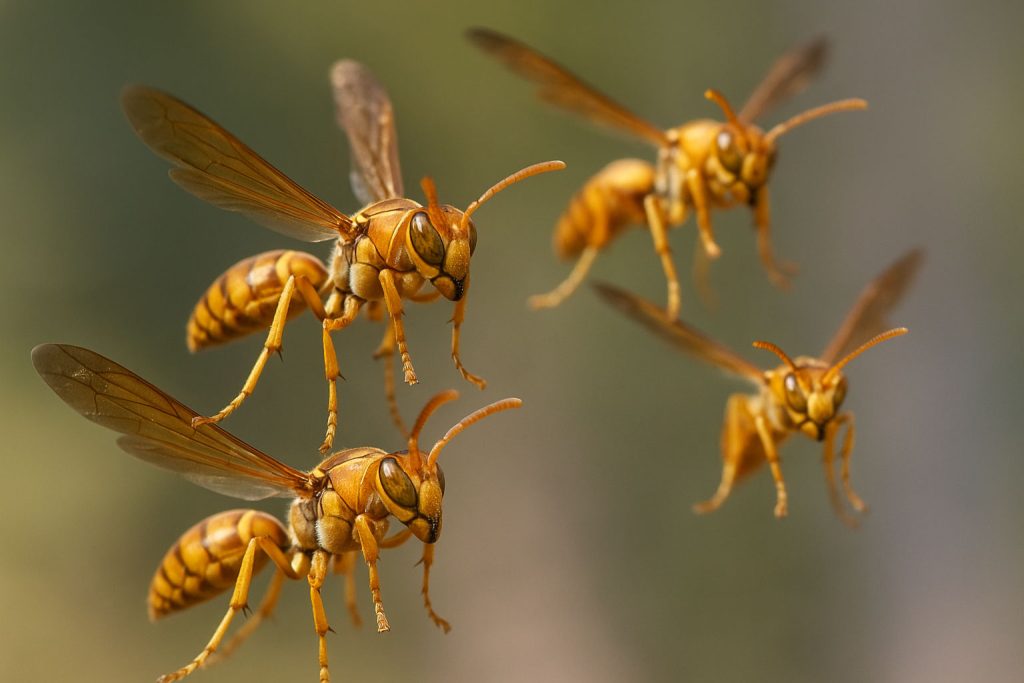
🔎 Bee vs. Wasp: How To Tell The Difference
| Feature | Africanized Honey Bee | Paper Wasp |
|---|---|---|
| Body | Fuzzy, golden-brown, robust | Smooth, long-legged, wasp-waisted |
| Size | 1/2 inch (12 mm) | 3/4 inch (19 mm) and up |
| Behavior | Feeds on flowers, can swarm defensively | Hunts insects, builds open nests |
| Nest Type | Wax, in hidden cavities (walls, trees, barrels) | Papery, umbrella-shaped, exposed |
| Sting | Can sting only once, dies after | Can sting multiple times |
| Aggression | Highly defensive near nest, may chase | Defensive only near nest |
Great photo guides:
- UCR: Honeybee Identification
- Arizona Extension: Africanized Bee FAQs (photos)
- WA DOH: Bees & Wasps in the Northwest
Frequently Asked Questions
Q: Are most bees in Phoenix Africanized?
A: Yes, nearly all wild honey bees in Phoenix are Africanized honey bees, which are more defensive than European varieties.
Q: Are paper wasps dangerous?
A: Paper wasps can sting multiple times if their nest is disturbed, but are less aggressive than Africanized bees. Their stings are painful and may cause allergic reactions.
Q: Should I try to remove a bee or wasp nest myself?
A: No—disturbing a nest can be extremely dangerous. Always call a licensed pest control professional for removal.
Need bees or wasps gone today?
Call Bee Removal Phoenix by Busy Bee Pest Solutions for same-day removal of bee swarms, hives, or wasp nests.
